Abstract
1. A method is described for determining the space constant gamma of heart muscle strips using a sucrose gap technique. 2. The average value of gamma for frog atrial trabeculae was found to be nearly 700 mum. This value is nearly twice the length of the test gap (400 mum). Near the resting potential, the voltage non-uniformity should be about 10%. This was confirmed experimentally by comparing the membrane voltages recorded across the current-passing and voltage-recording sucrose gaps. 3. The non-uniformity during large depolarizations was calculated using a computer model. This model includes the inward-going rectification displayed by iK1 and the delayed rectification that occurs following depolarizations beyond -40mV. A single component of delayed rectification was included. 4. It is shown that even very large non-uniformities have relatively small effects on the shape of the activation curve and on the time course of onset or decay of current. 5. It is comcluded that the fast component of current decay described in a previous paper (Brown, Clark & Noble, 1976b) is not attributable to a non-uniformity artifact.
Full text
PDF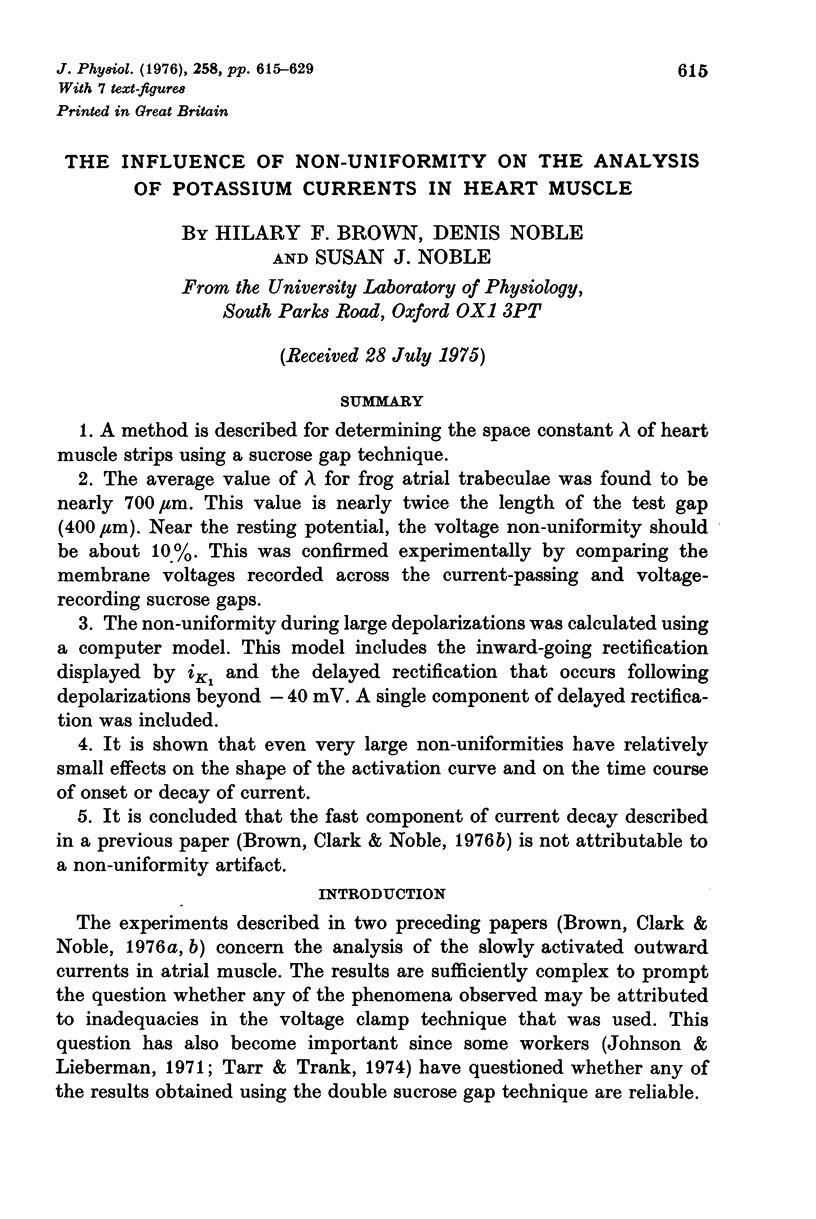
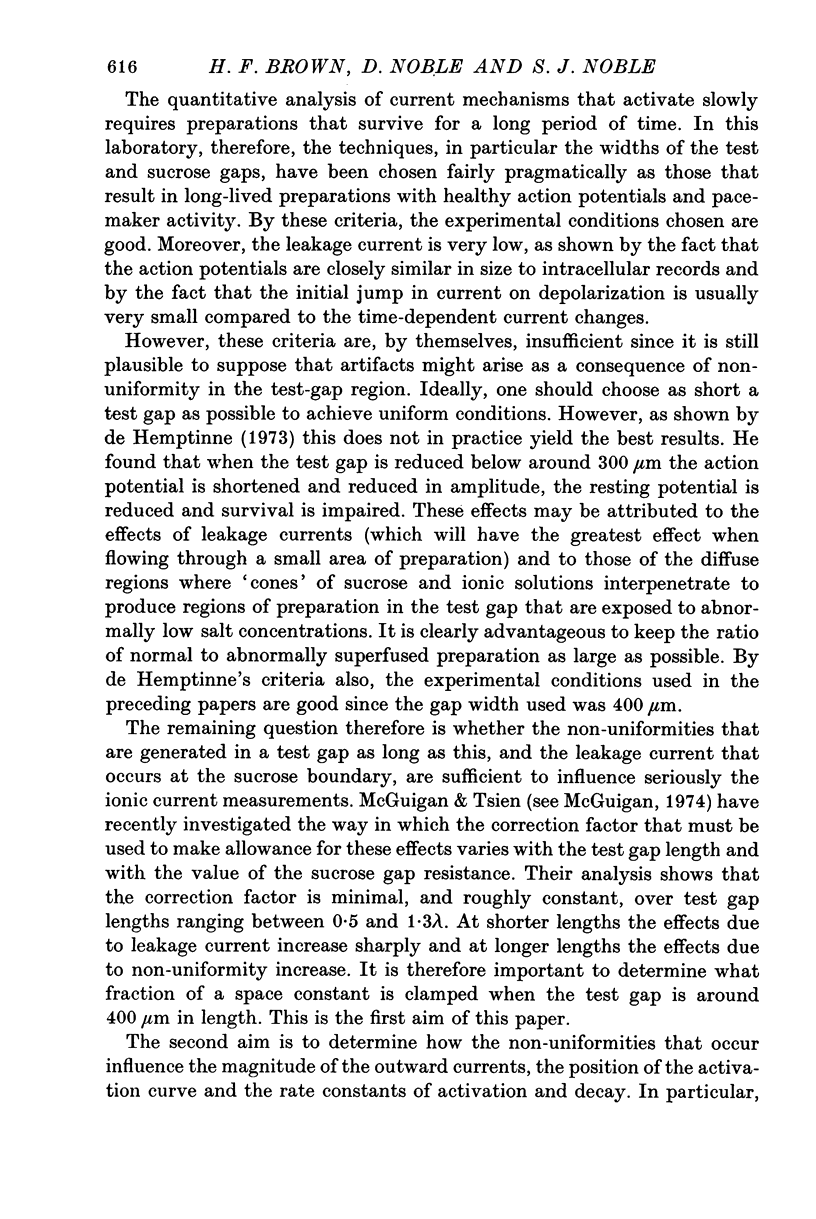

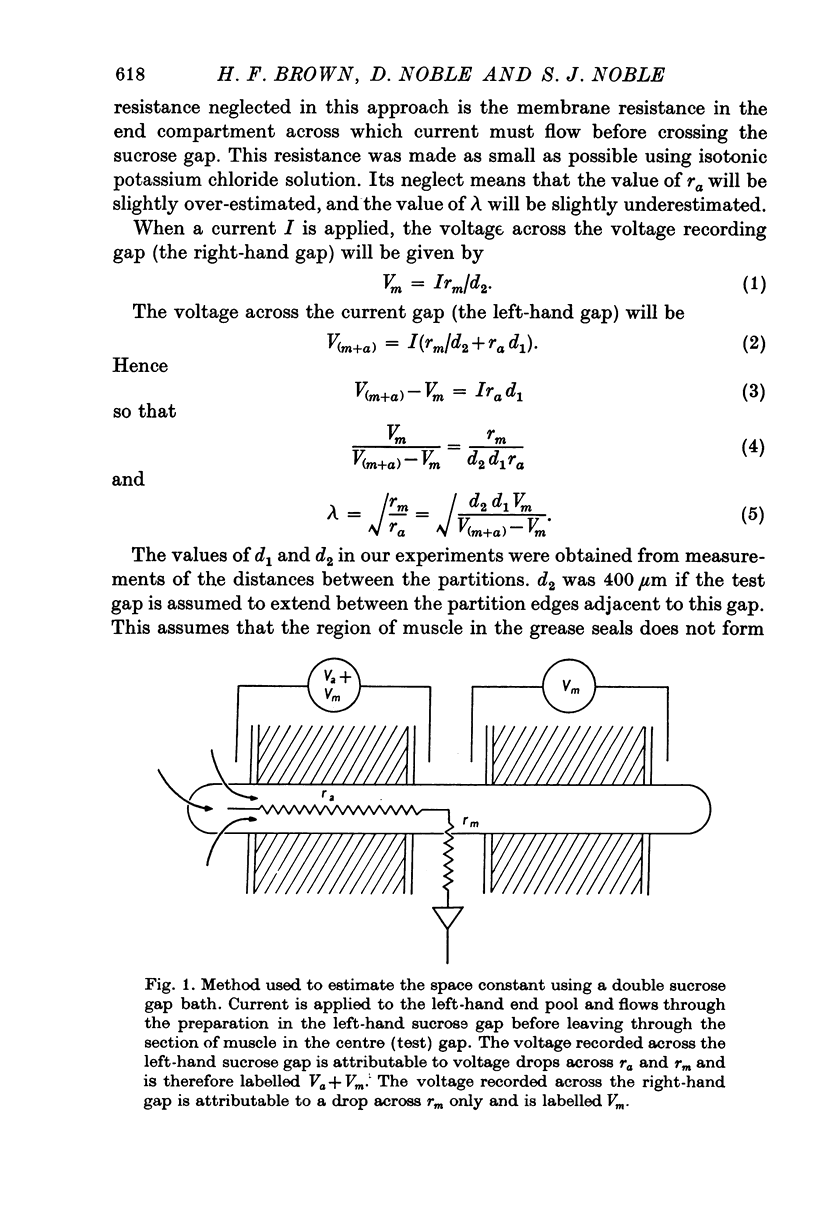
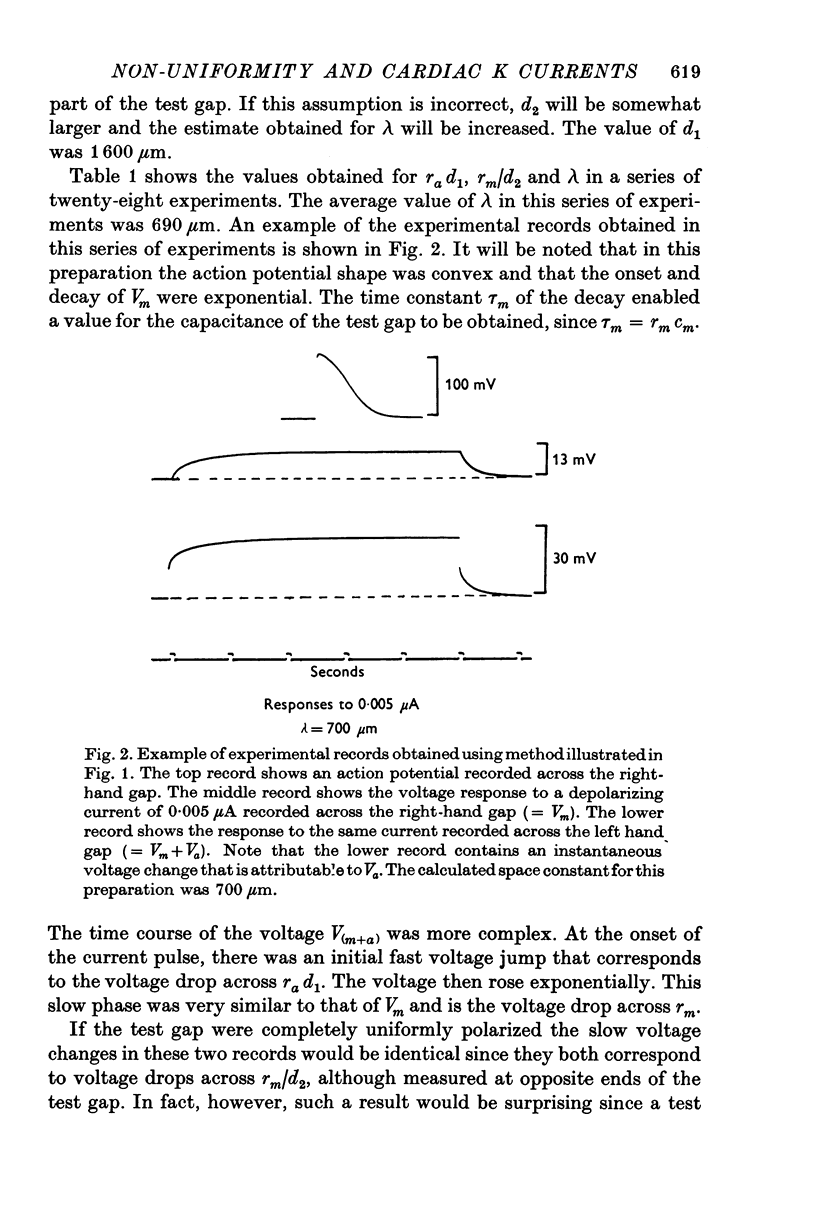
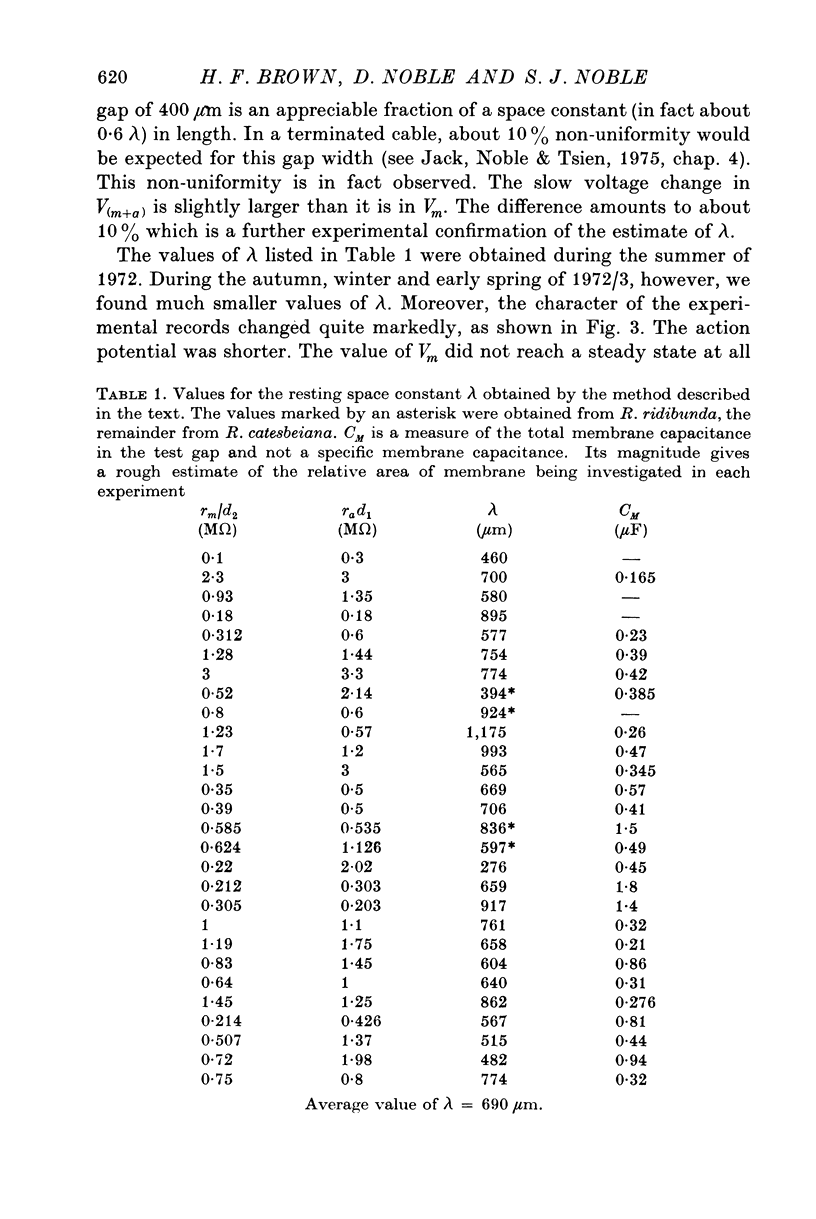
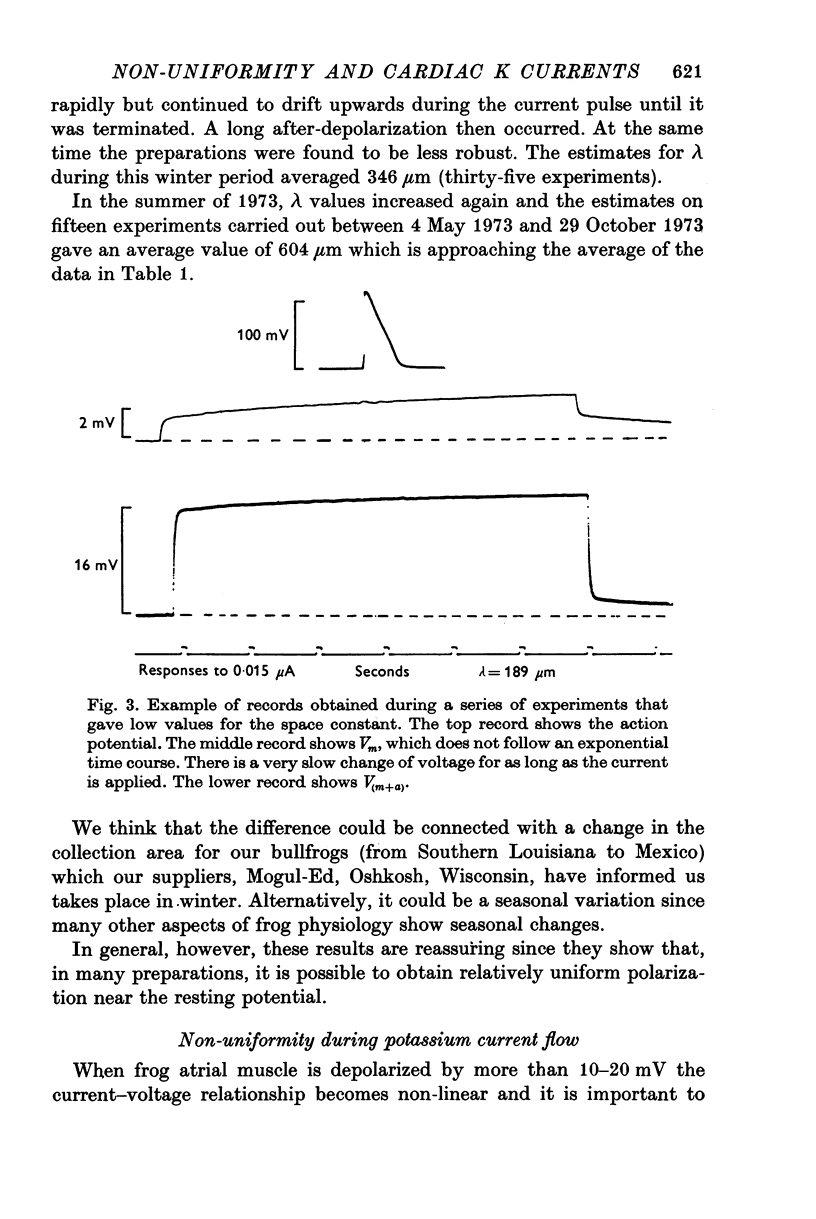
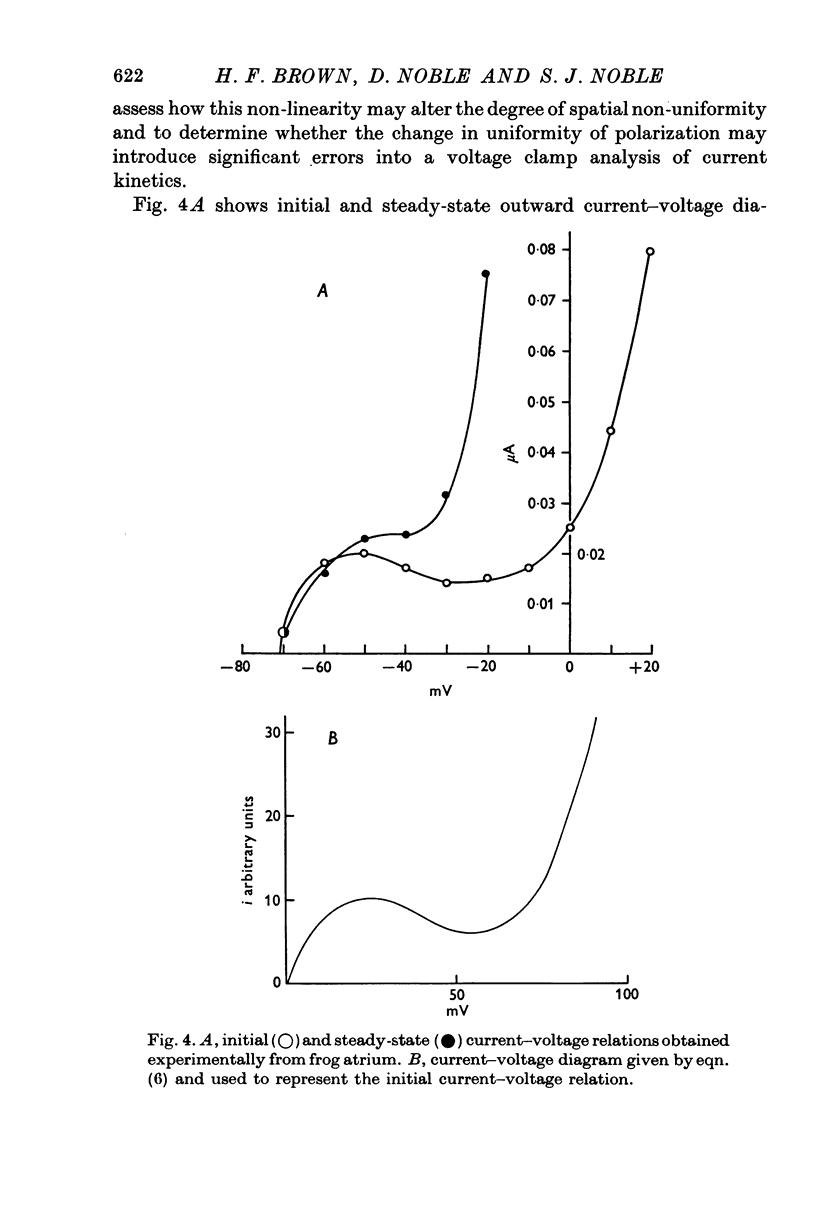
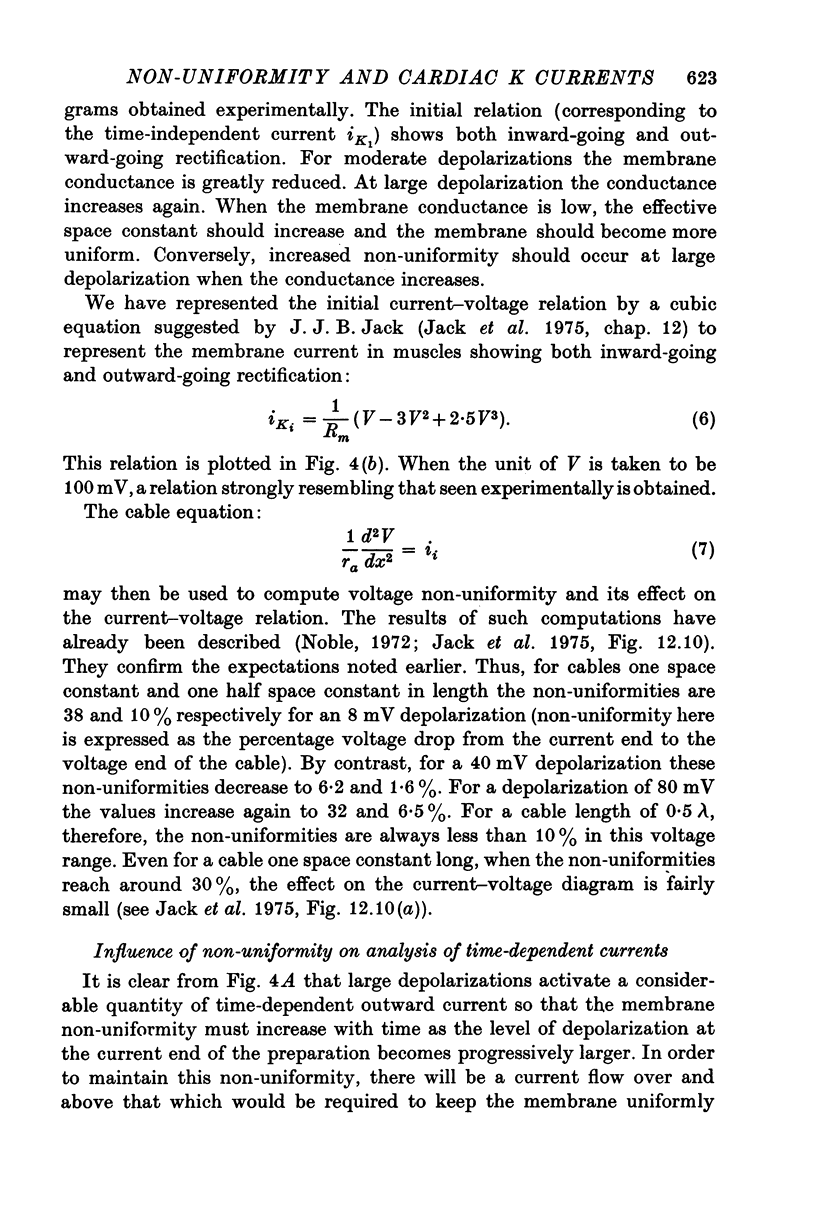

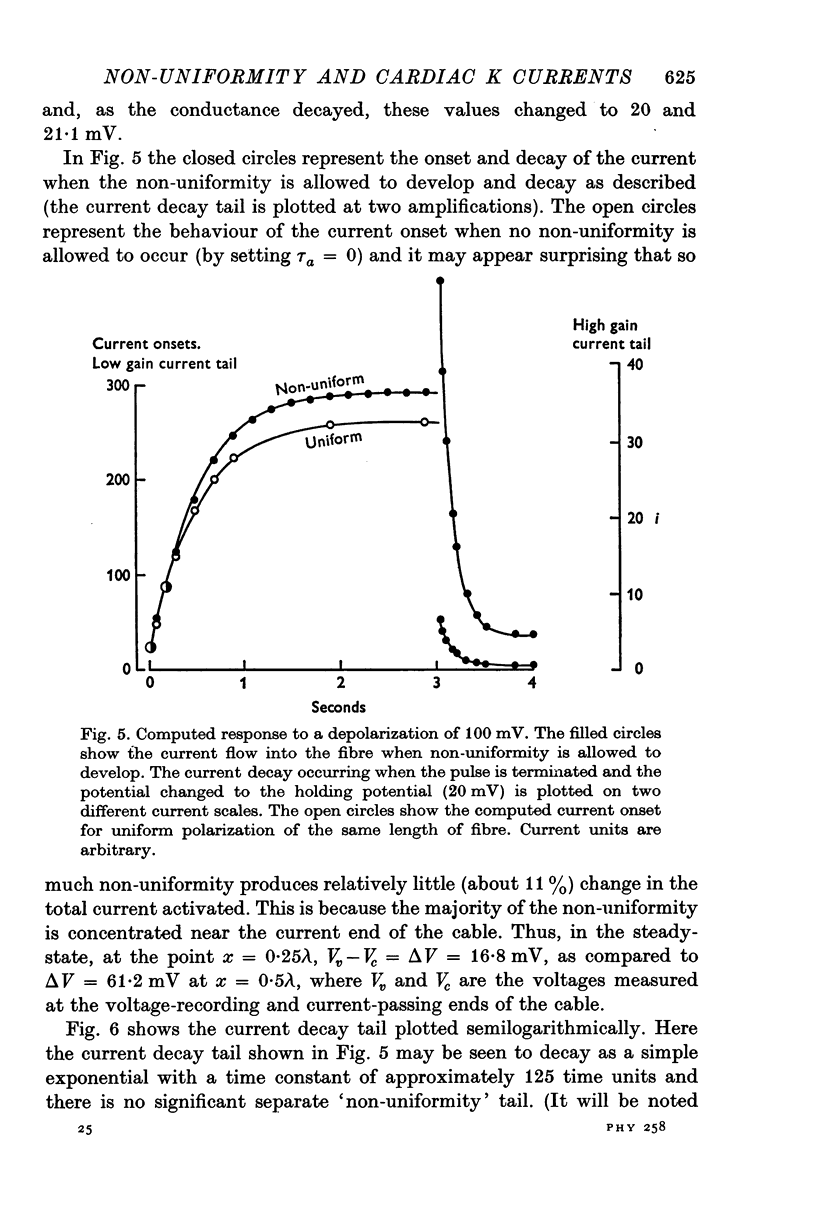
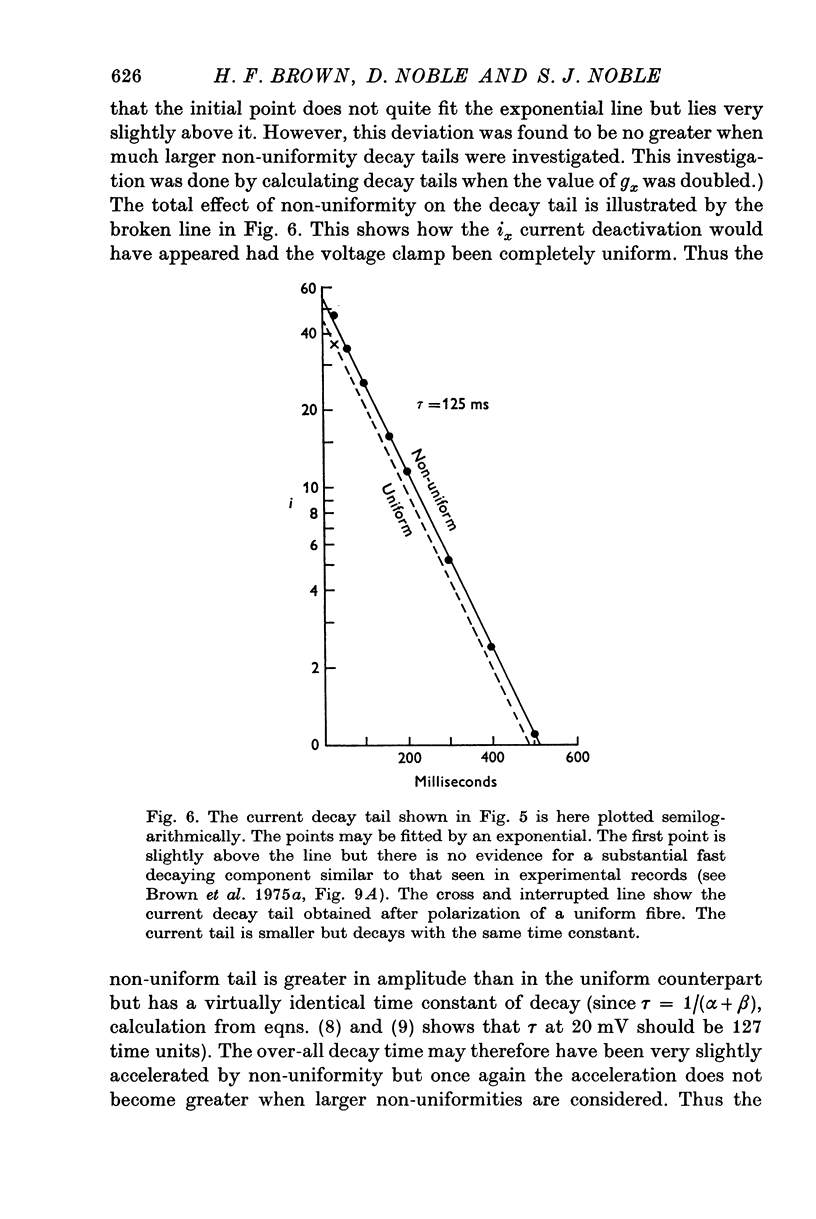
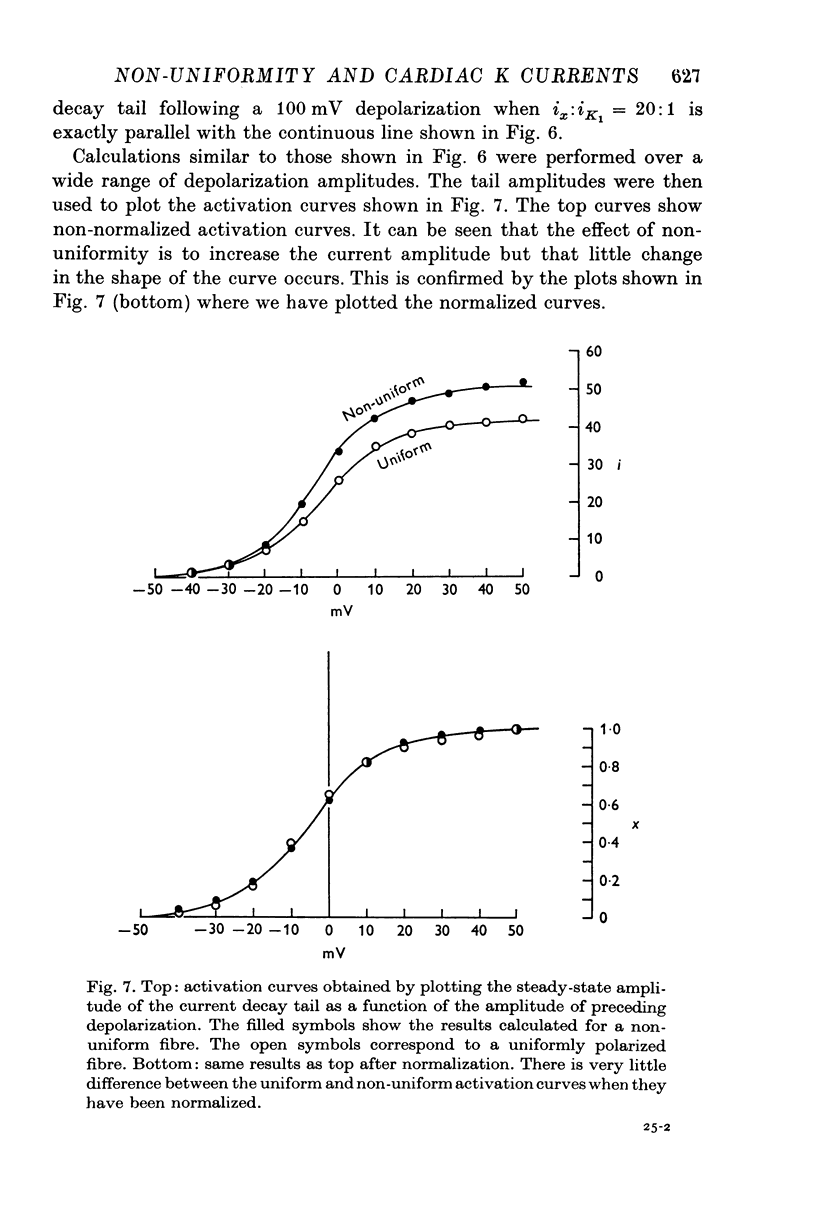
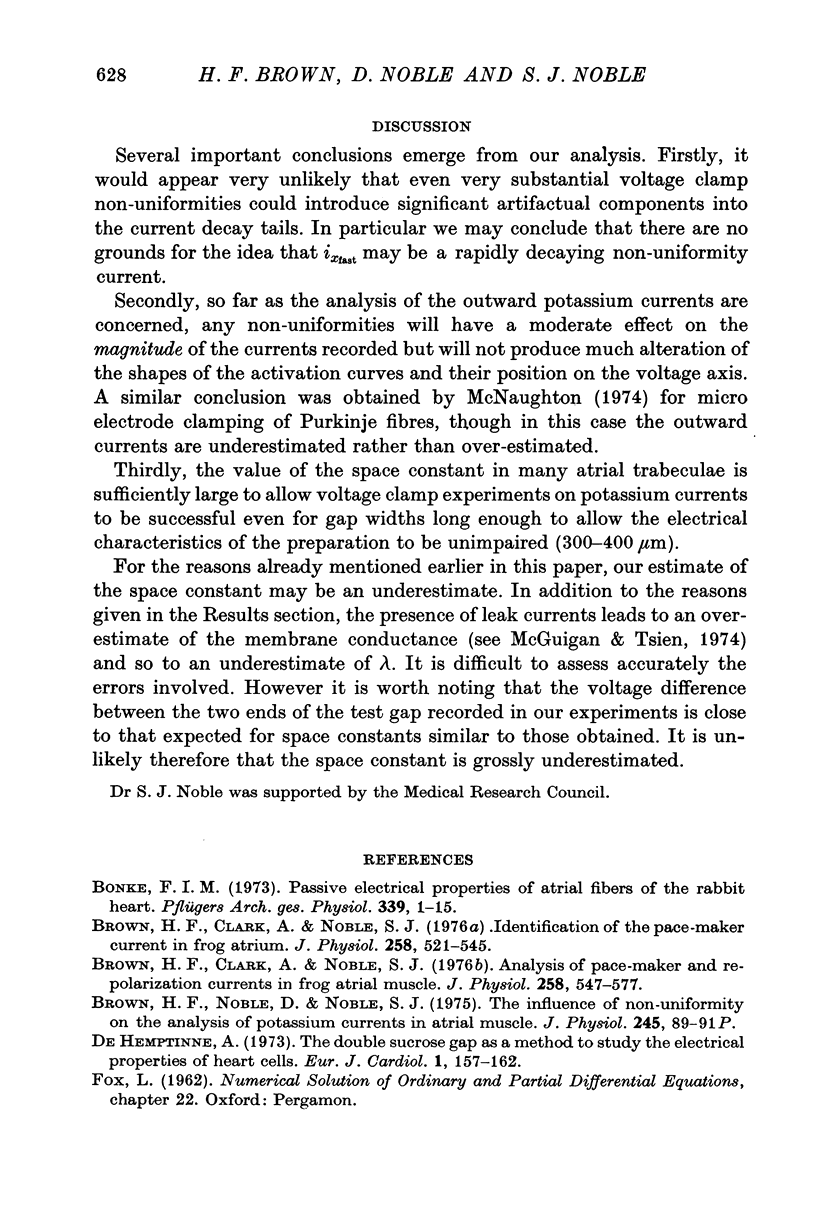
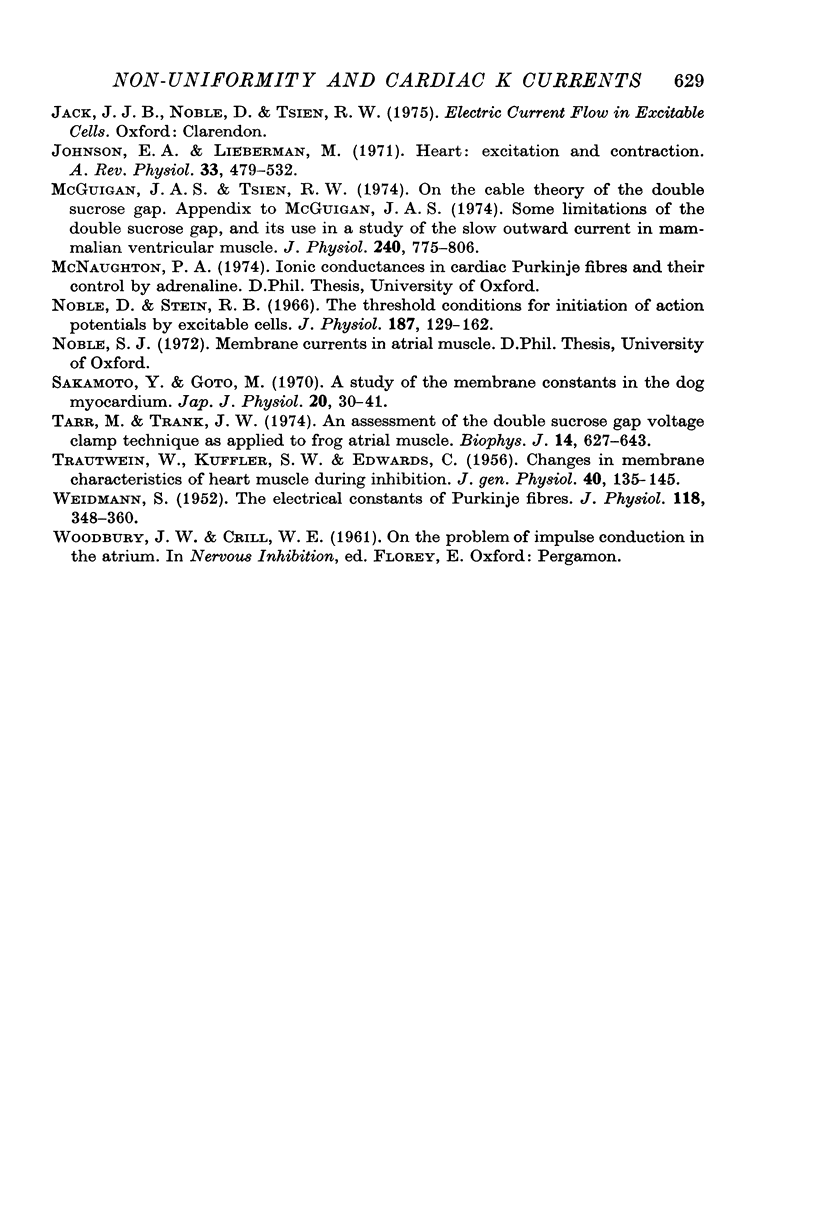
Selected References
These references are in PubMed. This may not be the complete list of references from this article.
- Bonke F. I. Passive electrical properties of atrial fibers of the rabbit heart. Pflugers Arch. 1973 Mar 5;339(1):1–15. doi: 10.1007/BF00586977. [DOI] [PubMed] [Google Scholar]
- Brown H. F., Clark A., Noble S. J. Analysis of pace-maker and repolarization currents in frog atrial muscle. J Physiol. 1976 Jul;258(3):547–577. doi: 10.1113/jphysiol.1976.sp011435. [DOI] [PMC free article] [PubMed] [Google Scholar]
- Brown H. F., Clark A., Noble S. J. Identification of the pace-maker current in frog atrium. J Physiol. 1976 Jul;258(3):521–545. doi: 10.1113/jphysiol.1976.sp011434. [DOI] [PMC free article] [PubMed] [Google Scholar]
- Brown H. F., Noble D., Noble S. J. The influence of non-uniformity on the analysis of potassium currents in atrial muscle. J Physiol. 1975 Feb;245(2):89P–91P. [PubMed] [Google Scholar]
- DE Hemptinne A. The double sucrose gap as a method to study the electrical properties of heart cells. Eur J Cardiol. 1973 Dec;1(2):157–162. [PubMed] [Google Scholar]
- EDWARDS C., KUFFLER S. W., TRAUTWEIN W. Changes in membrane characteristics of heart muscle during inhibition. J Gen Physiol. 1956 Sep 20;40(1):135–145. doi: 10.1085/jgp.40.1.135. [DOI] [PMC free article] [PubMed] [Google Scholar]
- Johnson E. A., Lieberman M. Heart: excitation and contraction. Annu Rev Physiol. 1971;33:479–532. doi: 10.1146/annurev.ph.33.030171.002403. [DOI] [PubMed] [Google Scholar]
- McGuigan J. A. Some limitations of the double sucrose gap, and its use in a study of the slow outward current in mammalian ventricular muscle. J Physiol. 1974 Aug;240(3):775–806. doi: 10.1113/jphysiol.1974.sp010634. [DOI] [PMC free article] [PubMed] [Google Scholar]
- Noble D., Stein R. B. The threshold conditions for initiation of action potentials by excitable cells. J Physiol. 1966 Nov;187(1):129–162. doi: 10.1113/jphysiol.1966.sp008079. [DOI] [PMC free article] [PubMed] [Google Scholar]
- Sakamoto Y., Goto M. A study of the membrane constants in the dog myocardium. Jpn J Physiol. 1970 Feb 15;20(1):30–41. doi: 10.2170/jjphysiol.20.30. [DOI] [PubMed] [Google Scholar]
- Tarr M., Trank J. W. An assessment of the double sucrose-gap voltage clamp technique as applied to frog atrial muscle. Biophys J. 1974 Sep;14(9):627–643. doi: 10.1016/S0006-3495(74)85940-0. [DOI] [PMC free article] [PubMed] [Google Scholar]
- WEIDMANN S. The electrical constants of Purkinje fibres. J Physiol. 1952 Nov;118(3):348–360. doi: 10.1113/jphysiol.1952.sp004799. [DOI] [PMC free article] [PubMed] [Google Scholar]


